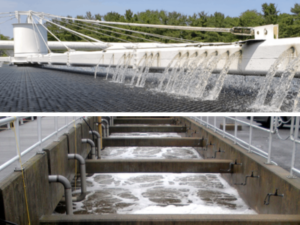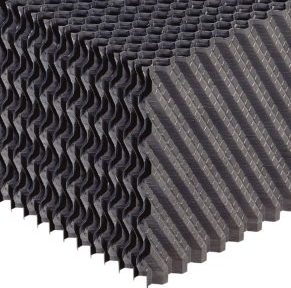In the past when people would try to evaluate and compare different fills to each other, one of the pieces of data they would want to know is the Specific Surface Area (SSA) of a fill. SSA is the amount of surface area per volume – ft2/ft3 (m2/m3). For example, CF1200 has a SSA of 69 ft2/ft3 (226 m2/m3) and CF1900’s SSA is 48 ft2/ft3 (157.5 m2/m3).
In general, this can give you an idea of the heat transfer potential of a fill, however, it is important to note that the value of SSA is not the sole factor in a fill’s cooling capability. It also is impossible to use small differences in SSA to rank different fills. Large differences allow for general characterizations, but small differences do not. It is well known that CF1200 is a more thermally efficient fill than CF1900, and the difference in SSA’s listed above does show that per volume, CF1200 in general has higher efficiency. However, let’s assume that we have four fills with SSA’s as follow:
Fill 1: 42 ft2/ft3 (137.8 m2/m3)
Fill 2: 45 ft2/ft3 (147.6 m2/m3)
Fill 3: 47 ft2/ft3 (154.2 m2/m3)
Fill 4: 48 ft2/ft3 (157.5 m2/m3)
Just because Fill 4’s SSA is the greatest doesn’t mean that it will provide the best cooling. Why is that?
Of greater importance are two items: Is the fill actually able to utilize all the surface area it has, and then, what is the fill able to do with the surface area it has? A fill that has less surface area can provide greater heat transfer if it actively ensures that all the surfaces wet out versus another fill that, while on paper has more surface area of plastic, does not promote full surface utilization. If that fill also allows a greater quantity of air to flow over the wetted surfaces, then it will add another powerful boost to the cooling capability.
In case you were wondering where the numbers above originated: Fill 1 = ShockWaveTM, Fill 2 = OF21MA, Fill 3 = ThermaCrossTM, and Fill 4 = CF1900. With their PowerCurve™ and MicroBoost™ designs, respectively, ShockWave and ThermaCross highlight how there are many other design features that have greater impact than just SSA on cooling capability and how continuing fill development research is jump-starting fill performance for the future.


